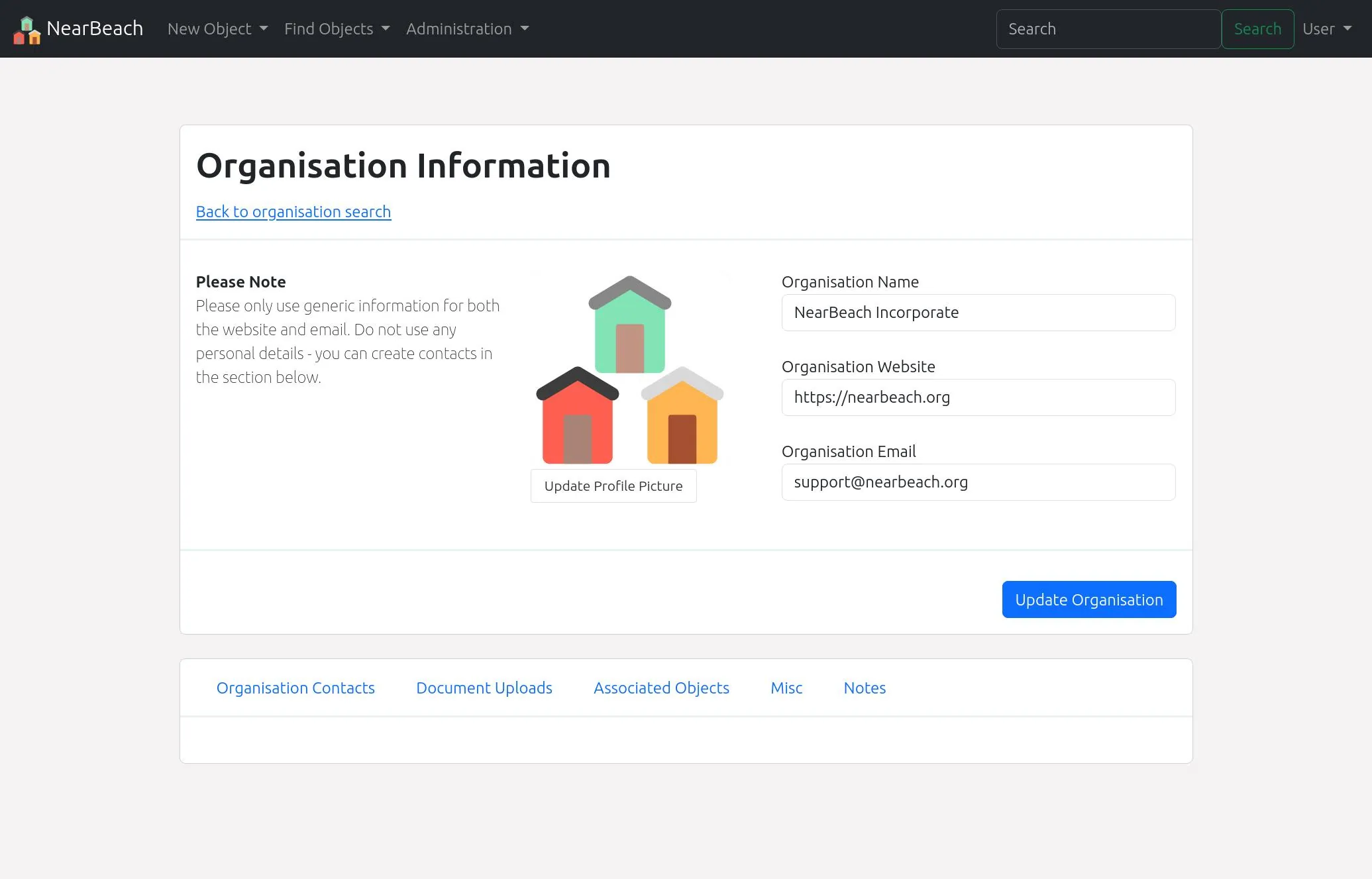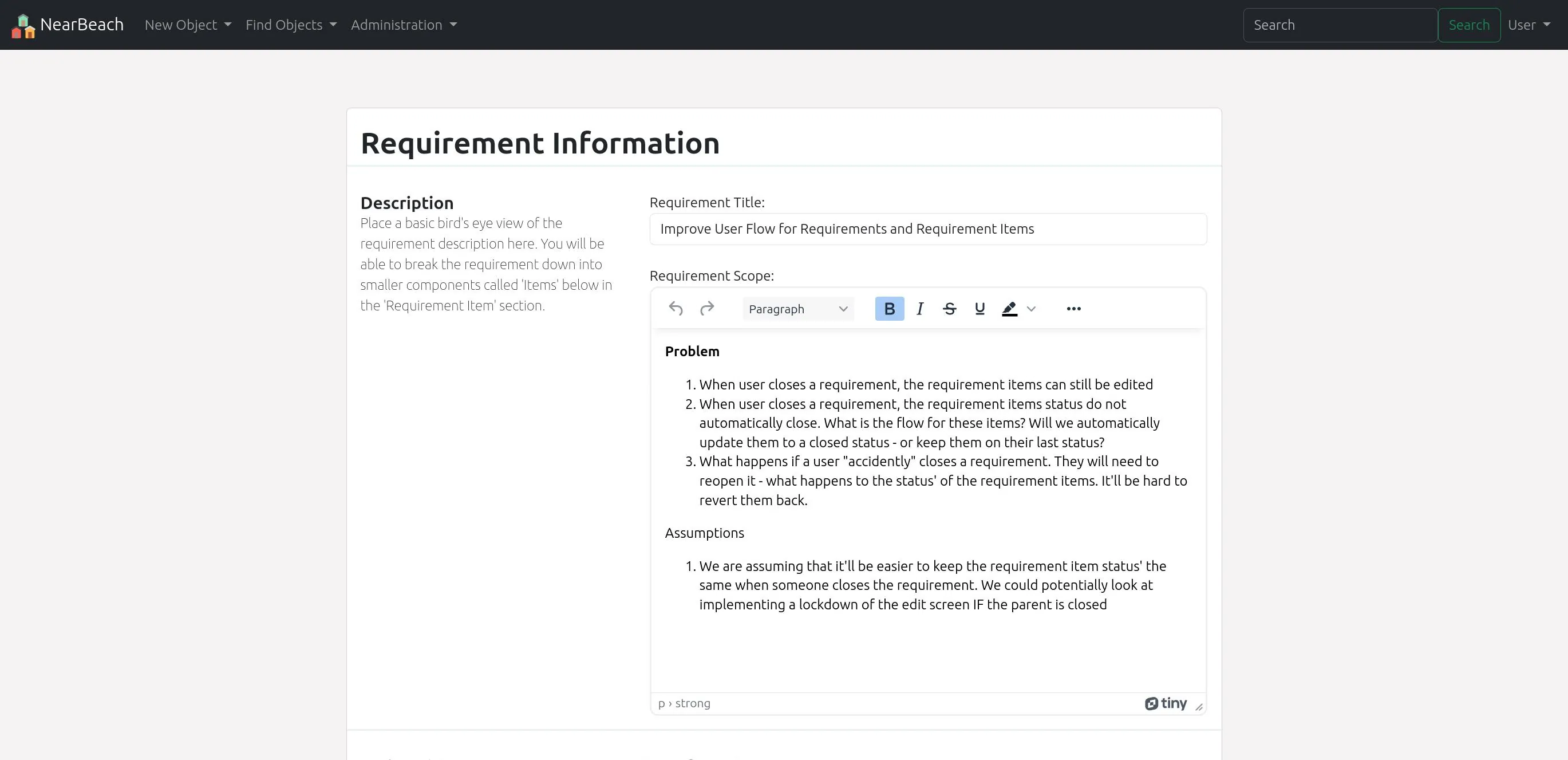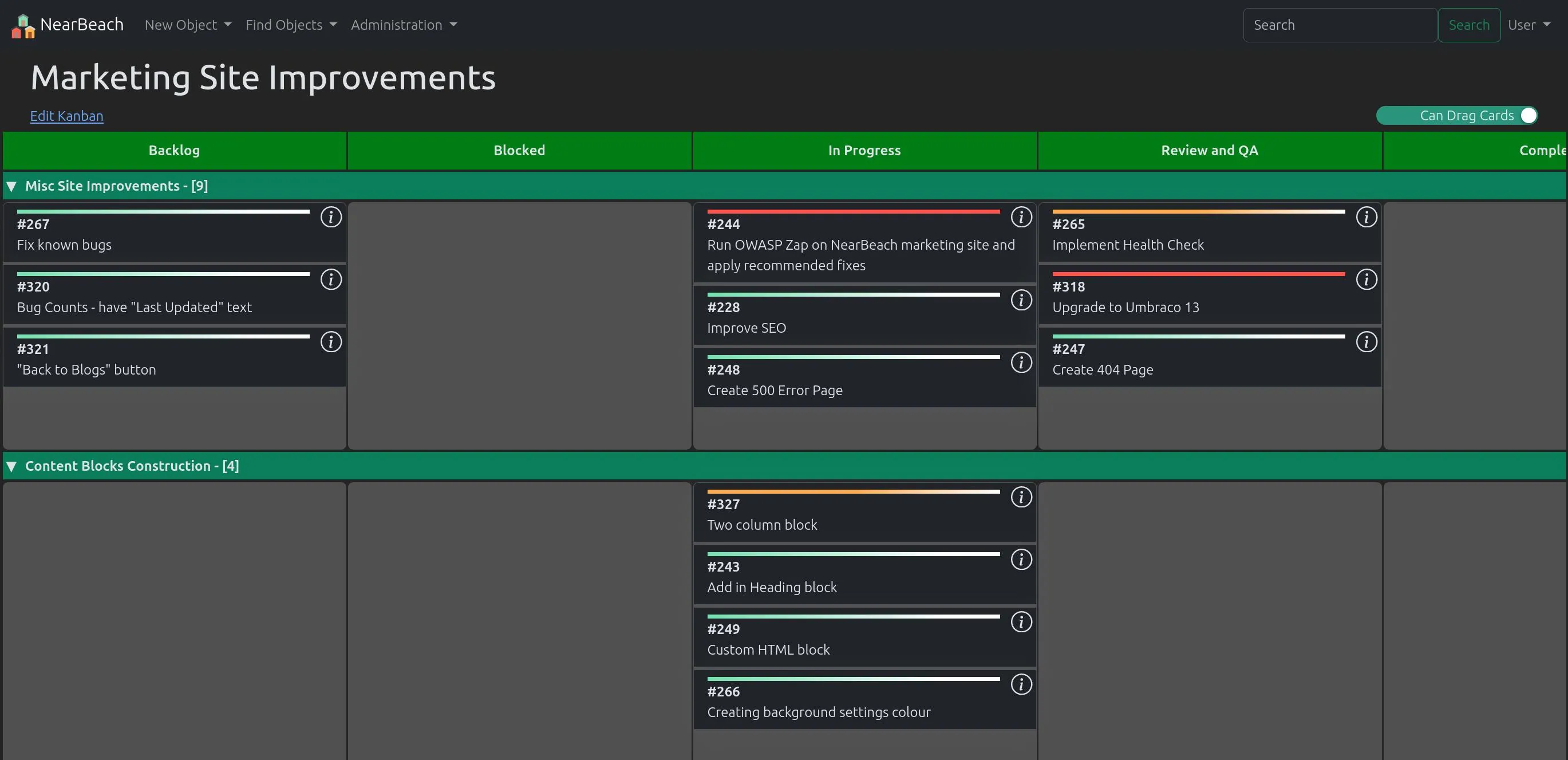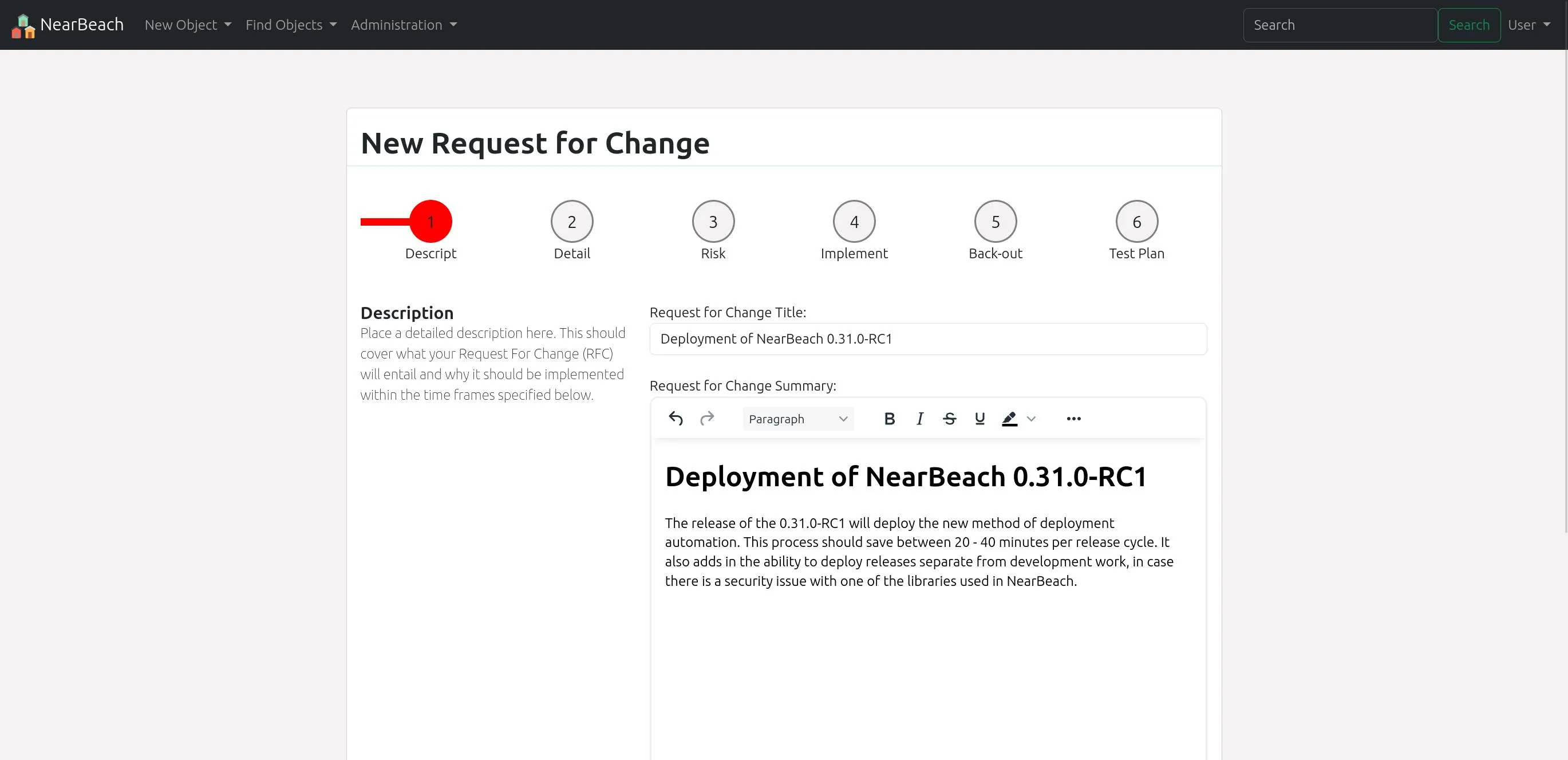Our love of open source software has driven us to create the tools you can use to complete you projects. NearBeach is an Open Source project management tool with no licensing costs. Below are screenshots of some of the functionality within NearBeach
Within NearBeach, you are able to gather simple Organisation and customer details. These details can then be linked to the following objects;
This will help you track which objects are currently connected to these organisations/customers.

Every good project starts off with collecting user requirements. NearBeach has the "Requirements" functionality where you can store this data, and track any tasks/projects assigned to it.
Requirements are a helicopter view of what the user would want. i.e. "Upgrade to branding".
Requirement Items are a more detailed view of each item the user would like to have achieved.
Both requirements and items can be connected to projects/tasks where the work is done. Users will be able to track the progress of work done from the requirements/items page.

When projects and tasks do not suit your workflow as you would like, we have implement the Kanban board functionality. The kanban board are customisable with you being able to change both the columns and the levels within the board.
Users will be able to create as many cards as they would like, and even link in objects like;

When you are ready to deploy a change, for either yourself or a customer, it is advisable to go through Change Board Advisory (CAB). NearBeach has built in Request For Change (RFC) functionality, where you can store;
